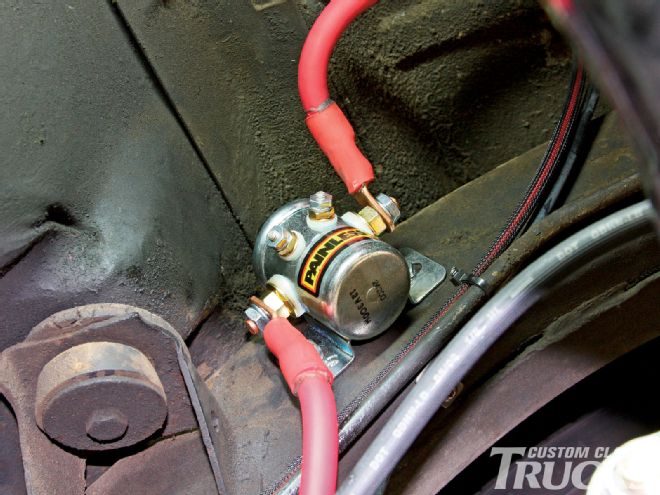
At the heart of every vehicular electrical system is the battery and charging system. Without the charging system operating properly, most if not all vehicles simply cease operating. That case is compounded even further in a truck where computers control many of the vital functions that weren't found in vehicles thirty or so years ago. And with today's vast aftermarket making it easier and more desirable to install such components as fuel injection or electronic transmission controls, a hearty, reliable charging system is more important than ever.
But what makes for a great charging system? The answer is simple really, well, actually it's quite difficult. Typically, the amperage draw from one truck to another can vary greatly. An LS1 powered, computer controlled pickup with three 100-amp stereo amplifiers, air compressors for the suspension, an electric fan, and air conditioning is definitely going to need a slightly beefier charging system than a truck with a carbureted 350 and a four-speed with no bells and whistles. But the nuts and bolts of both systems will be nearly identical.
Firstly a good strong battery is an obvious necessity. And while there are a myriad of batteries and battery types available now days, most of us still compare the ratings of batteries by CCAs or cold-cranking amps. In the past, it was a "bigger is better" mentality when it came to picking a battery for a custom application. These days, however, companies such as Optima Batteries have taken battery science into the space age with such advances as their proprietary Spiralcell technology, which yields a stronger, lighter, and smaller battery that has a dual-purpose start and deep-duty cycle all enclosed in a leak-free case.
Charging systems have also never been more advanced, with alternators now capable of making upwards of 120 amps in a relatively small package size. Add to that, what companies such as Powermaster Motorsports offers in their line of PowerGEN alternators that package a 75-amp alternator in an old-timey, generator-looking housing and you've got the best of both worlds.
But the charging system is really only as good as the ties that bind it together; or in the case of an electrical system, the wires and battery cables. Things such as good, solid connections and proper gauge wire sizes make all the difference in the world when it comes to voltage drop and system reliability, especially when finicky computers are in the mix.
But it doesn't take a genius to set up a proper charging and electrical system, just a couple of tips from the professionals and some good, old-fashion elbow grease. We recently contacted Painless Performance to update an antiquated electrical system and found that they also offer a couple of security options that give piece of mind when it comes to not only maintaining and operating that classic truck, but also protecting it.